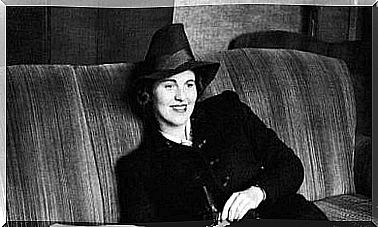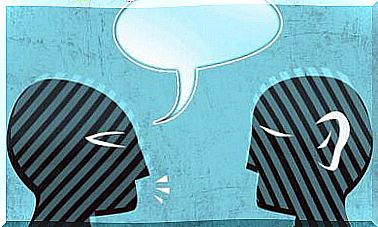Eye Contact Prepares For Connection

Everyone knows the power of eye contact with another human being. It is a special gesture that helps to communicate and, at the same time, tells us a lot about the other person. When we make eye contact, we share an emotional and mental state with that person.
Good friends just need to meet eyes to communicate. Getting lost in the eyes of your loved one means entering their world. Eye contact activates our social brain, our intentions and our emotions.
Now, a new study conducted with magnetic resonance imaging has revealed a lot of data relating to brain areas activated by eye contact in real time and on a delayed basis. The first fact tells us that when we make eye contact, we synchronize the movement of our eyelids with those of the other person. But there is more. Let’s find out what it is.
Blink during eye contact
Apparently, eye contact activates the social part of the brain and synchronizes eye movements and blinking. This means that there is a neural activation that reorganizes our response towards other people.

Eye contact is one of the most obvious automatic mimics. It is also a way of telling the other that we understand him. It favors social interaction and promotes effective communication. Blinking also expresses a cognitive force that projects one’s inner world.
Until now, imaging studies have only been able to study the activity of the brain of one person at a time. But Norihiro Sodato’s team of the National Institute of Physiological Sciences in Japan has begun work on an innovative technique known as hyperscan.
I study
The results of this experiment show us what happens in the brain in real time when two people look into each other’s eyes for the first time. The hyperscan made it possible to observe the brains of two people in unison using different devices for functional magnetic resonance.
Sadato’s team analyzed 32 people, dividing them into pairs and subjecting them to the examination of two RMF machines at the same time.
The experiment could not be performed on subjects who looked at each other with eye to eye, because MRI image processing assumes that individuals must be inside a machine and remain stationary.
Each scanner was therefore equipped with a video screen and a camera. The participants did not know each other, so eye contact was taking place for the first time. The blinking was used as an indicator of attunement among the participants.
The experiment served to quantify the subjects’ brain activity in two different phases. In the first, they were shown a white screen; later they observed the image of the partner during the experiment (person they did not know), first in real time and then with a 20 second delay in the processing of the image.
They were given instructions to focus on what the other person was thinking to find out about their personality and how they were doing.
The results of the eye contact study
First of all, significant differences were observed regarding the cerebral activation of visual contact in real time and that after a few moments of delay. There is also a more intense connection in the limbic mirror system, a greater activation of the cerebellum.
The study showed that eye contact prepares the social brain to develop empathy and activates the same brain areas in the two people. Activating the cerebellum helps predict the sensory consequences of actions.

The incredible skill of our brain
The limbic system is associated with our ability to share and identify emotions, which is essential for empathy to occur. There seems to be a strong mutual influence between two people who blink as soon as eye contact is made.
This means that eye contact prepares the social brain to share other people’s mental states and is the foundation for effective social communication.
Finally, it has been shown that our brains distinguish between real-time images and recorded images and that it does so totally unconsciously. A fact that emerges as the most significant of all.









